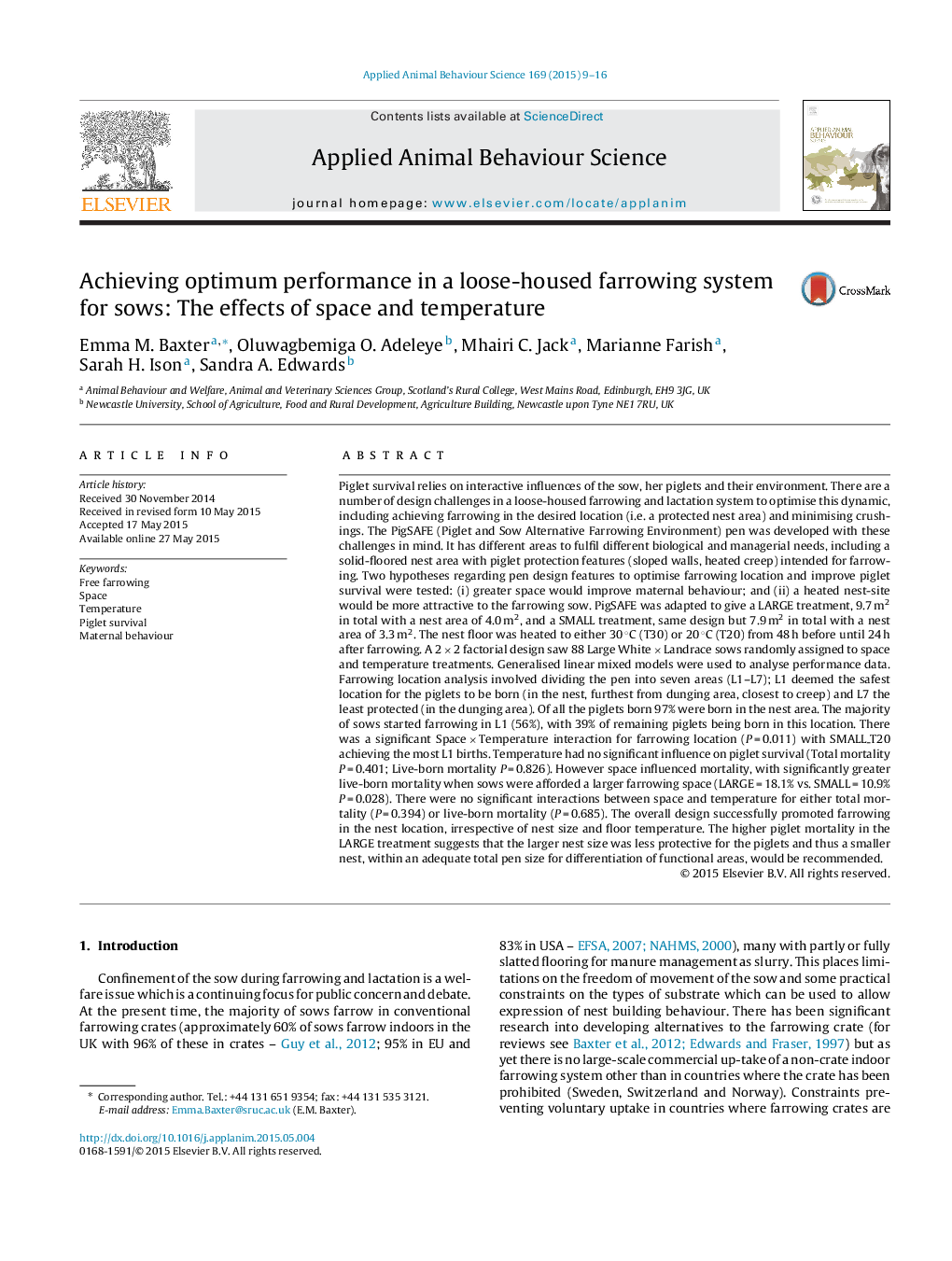| کد مقاله | کد نشریه | سال انتشار | مقاله انگلیسی | نسخه تمام متن |
|---|---|---|---|---|
| 4522462 | 1625337 | 2015 | 8 صفحه PDF | دانلود رایگان |
• Good piglet survival relies on interactive influences of the sow, her piglets and their environment.
• Key features in the environment can stimulate good maternal behaviour.
• Space and temperature treatments were tested to determine effects on maternal behaviour (i.e. farrowing location) and performance.
• Incorrect nest size compromises piglet survival.
• Design details are critical to the success of alternative farrowing systems.
Piglet survival relies on interactive influences of the sow, her piglets and their environment. There are a number of design challenges in a loose-housed farrowing and lactation system to optimise this dynamic, including achieving farrowing in the desired location (i.e. a protected nest area) and minimising crushings. The PigSAFE (Piglet and Sow Alternative Farrowing Environment) pen was developed with these challenges in mind. It has different areas to fulfil different biological and managerial needs, including a solid-floored nest area with piglet protection features (sloped walls, heated creep) intended for farrowing. Two hypotheses regarding pen design features to optimise farrowing location and improve piglet survival were tested: (i) greater space would improve maternal behaviour; and (ii) a heated nest-site would be more attractive to the farrowing sow. PigSAFE was adapted to give a LARGE treatment, 9.7 m2 in total with a nest area of 4.0 m2, and a SMALL treatment, same design but 7.9 m2 in total with a nest area of 3.3 m2. The nest floor was heated to either 30 °C (T30) or 20 °C (T20) from 48 h before until 24 h after farrowing. A 2 × 2 factorial design saw 88 Large White × Landrace sows randomly assigned to space and temperature treatments. Generalised linear mixed models were used to analyse performance data. Farrowing location analysis involved dividing the pen into seven areas (L1–L7); L1 deemed the safest location for the piglets to be born (in the nest, furthest from dunging area, closest to creep) and L7 the least protected (in the dunging area). Of all the piglets born 97% were born in the nest area. The majority of sows started farrowing in L1 (56%), with 39% of remaining piglets being born in this location. There was a significant Space × Temperature interaction for farrowing location (P = 0.011) with SMALL_T20 achieving the most L1 births. Temperature had no significant influence on piglet survival (Total mortality P = 0.401; Live-born mortality P = 0.826). However space influenced mortality, with significantly greater live-born mortality when sows were afforded a larger farrowing space (LARGE = 18.1% vs. SMALL = 10.9% P = 0.028). There were no significant interactions between space and temperature for either total mortality (P = 0.394) or live-born mortality (P = 0.685). The overall design successfully promoted farrowing in the nest location, irrespective of nest size and floor temperature. The higher piglet mortality in the LARGE treatment suggests that the larger nest size was less protective for the piglets and thus a smaller nest, within an adequate total pen size for differentiation of functional areas, would be recommended.
Journal: Applied Animal Behaviour Science - Volume 169, August 2015, Pages 9–16
